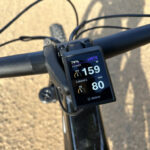When you first see the price tag on a Thruster Bike or similar budget bicycle, it can be incredibly tempting. “Why spend hundreds more?” you might ask yourself. After all, it looks like a bike, and it costs significantly less than those fancy models at the local bike shop. However, understanding the true value proposition of these ultra-affordable bikes requires looking beyond the initial price.
It’s easy to fall into the trap of thinking about initial cost only. Consider this: your thruster bike might only set you back $60. If a decent entry-level bike is often recommended around the $400 mark, it’s natural to assume you’re getting something that’s at least proportionally good for your money. “I spent less than a sixth of the price,” you might reason, “so surely I got a bike that’s at least a sixth as good.”
Unfortunately, this logic doesn’t hold up in the world of bicycles. What you actually get with a thruster bike is often something that is barely adequate for anything beyond the most casual, infrequent riding. These bikes are built with the absolute cheapest components imaginable. While they might be rideable straight out of the box, their lifespan is often short, and the experience they offer is far from enjoyable or efficient.
Alt text: Severely rusted bicycle chain and gears on a thruster bike, highlighting component quality issues.
Think about potential upgrades. You might quickly find yourself wanting to improve just a few key parts on your thruster bike – maybe the pedals, the seat, or the tires. But even these minor upgrades can quickly add up, potentially costing you as much as the original bike itself. And then you realize the wheels are also subpar, and a decent wheelset could cost even more. Suddenly, you’ve sunk more money into upgrades than the price of a significantly better bike from the start.
The real issue boils down to value. Thruster bikes are undeniably inexpensive, much cheaper than higher-quality bikes. But value isn’t just about the lowest price; it’s about the quality and usefulness you get for every dollar you spend. If a thruster bike cost $5 and a good entry-level bike cost $5000, then the value proposition might be debatable. Even at a $20 versus $2000 ratio, the value might be in the same ballpark. However, at the typical price point of around $60 for a thruster bike compared to $400 for a genuinely good entry-level bike, the better bike offers tremendously more value.
For just a few hundred dollars more – perhaps the equivalent of a week’s wages for someone earning minimum wage – you could own a bike that will last significantly longer, perform far better, and provide a much more enjoyable riding experience from day one. Investing a little more upfront in a quality bicycle is an investment in your cycling enjoyment, safety, and long-term value.

